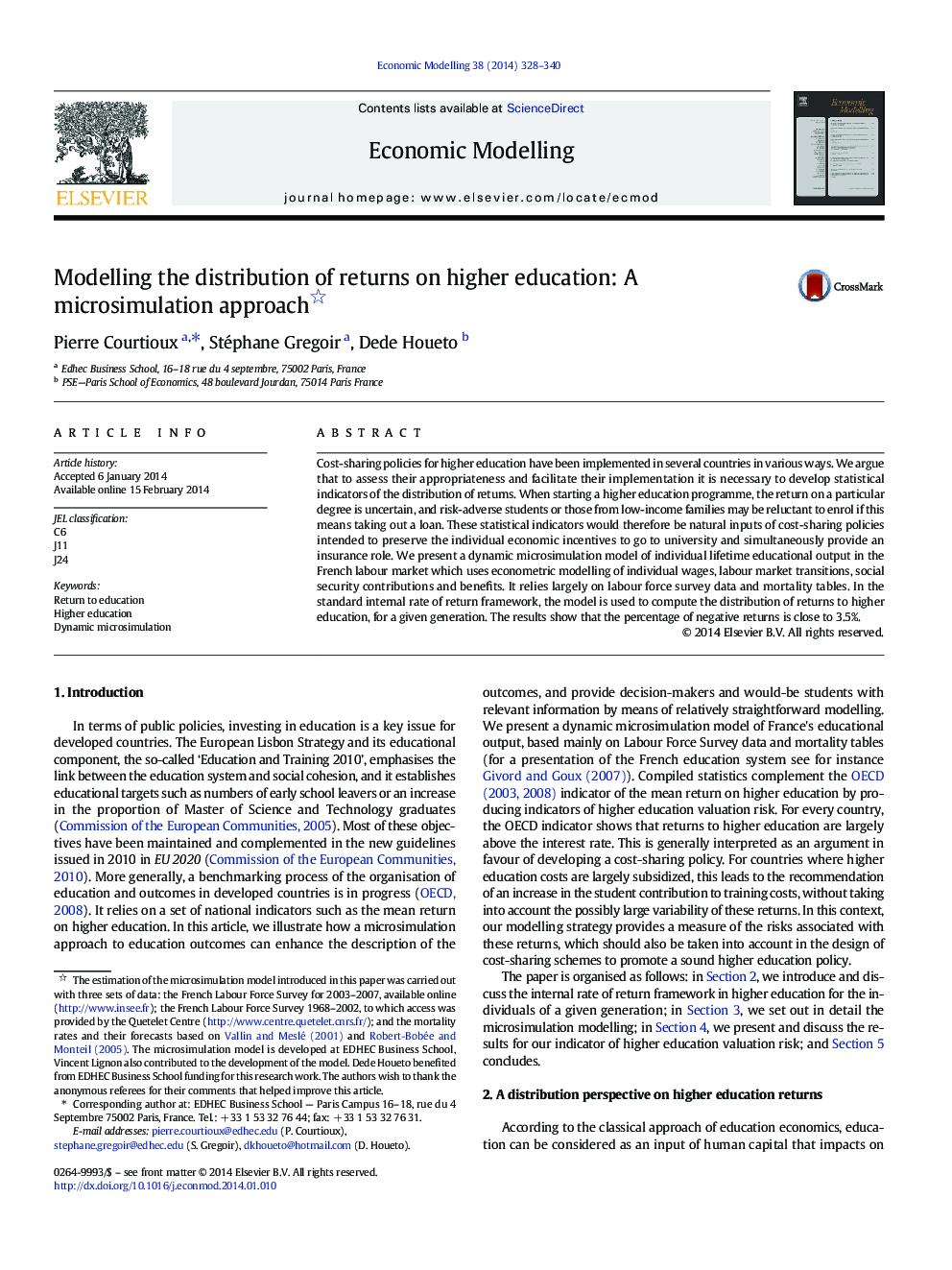| Article ID | Journal | Published Year | Pages | File Type |
|---|---|---|---|---|
| 5054382 | Economic Modelling | 2014 | 13 Pages |
Abstract
Cost-sharing policies for higher education have been implemented in several countries in various ways. We argue that to assess their appropriateness and facilitate their implementation it is necessary to develop statistical indicators of the distribution of returns. When starting a higher education programme, the return on a particular degree is uncertain, and risk-adverse students or those from low-income families may be reluctant to enrol if this means taking out a loan. These statistical indicators would therefore be natural inputs of cost-sharing policies intended to preserve the individual economic incentives to go to university and simultaneously provide an insurance role. We present a dynamic microsimulation model of individual lifetime educational output in the French labour market which uses econometric modelling of individual wages, labour market transitions, social security contributions and benefits. It relies largely on labour force survey data and mortality tables. In the standard internal rate of return framework, the model is used to compute the distribution of returns to higher education, for a given generation. The results show that the percentage of negative returns is close to 3.5%.
Related Topics
Social Sciences and Humanities
Economics, Econometrics and Finance
Economics and Econometrics
Authors
Pierre Courtioux, Stéphane Gregoir, Dede Houeto,
